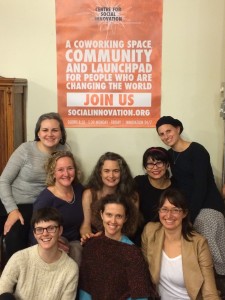By Sara Hodgkinson, R.Ac., TAB Intern
One of the things I truly love about Chinese Medicine is its capacity to surprise me. No matter how much I study, practice, read and learn there is always a goldmine of new and heretofore unknown applications for this nuanced practice. This rings especially true with me after attending Claudia Citkovitz’s lecture on the applications of Chinese Medicine in labour and delivery. From setting the energy in the birthing room to kickstarting labour, Claudia covered the multifarious ways that the presence of an acupuncturist can benefit the event of birth.
Claudia’s enthusiasm and infectious good humour are so illustrative of the more modern outlook on birth and pregnancy which has been (slowly) developing in the West over the past few decades; less disease, more empowering force of nature. It was amazing to get a taste of the encyclopedic knowledge she possesses, from personal anecdotes to Western medical procedures and interventions, even the energetic properties of drugs commonly used in birth and labour (‘Pitocin is just yang in a bag’ was a favourite quote!), as well as how to practice birthing massage and other hands on techniques. What resonated most with me was Claudia’s discussion on the issues typically experienced by various TCM constitutions during birth. Seeing how a Yang deficient person’s experience may differ from a Yin deficient person’s was a great tool, especially when provided with contraction charts as a visual support. Understanding how these presentations may differ and the problems which tend to be associated with each constitution is a powerful tool to have on the birthing ward as it gives us, to a certain degree, some foreshadowing of what issues may arise and how we can help to circumvent them or, at least, lessen their impact.
Assessing the Western drugs often used in induction and pain relief from a TCM viewpoint was also very useful, as, once again, it gives us some foresight into how a Yin vs a Yang deficient patient will react when induced with Pitocin, for example.
With both the empirical and anecdotal evidence presented, Claudia stressed the fertile potential (pun intended) of TCM theory and acupuncture within the scope of practice of birth professionals. Indeed, Claudia’s own career is testament to how useful the presence of an acupuncturist can be at a birth.
——–
Sara Hodgkinson is an Intern with Toronto AcuBirthing and a newly Registered Acupuncturist with the College of Traditional Chinese Medicine Practitioners and Acupuncturists of Ontario.

